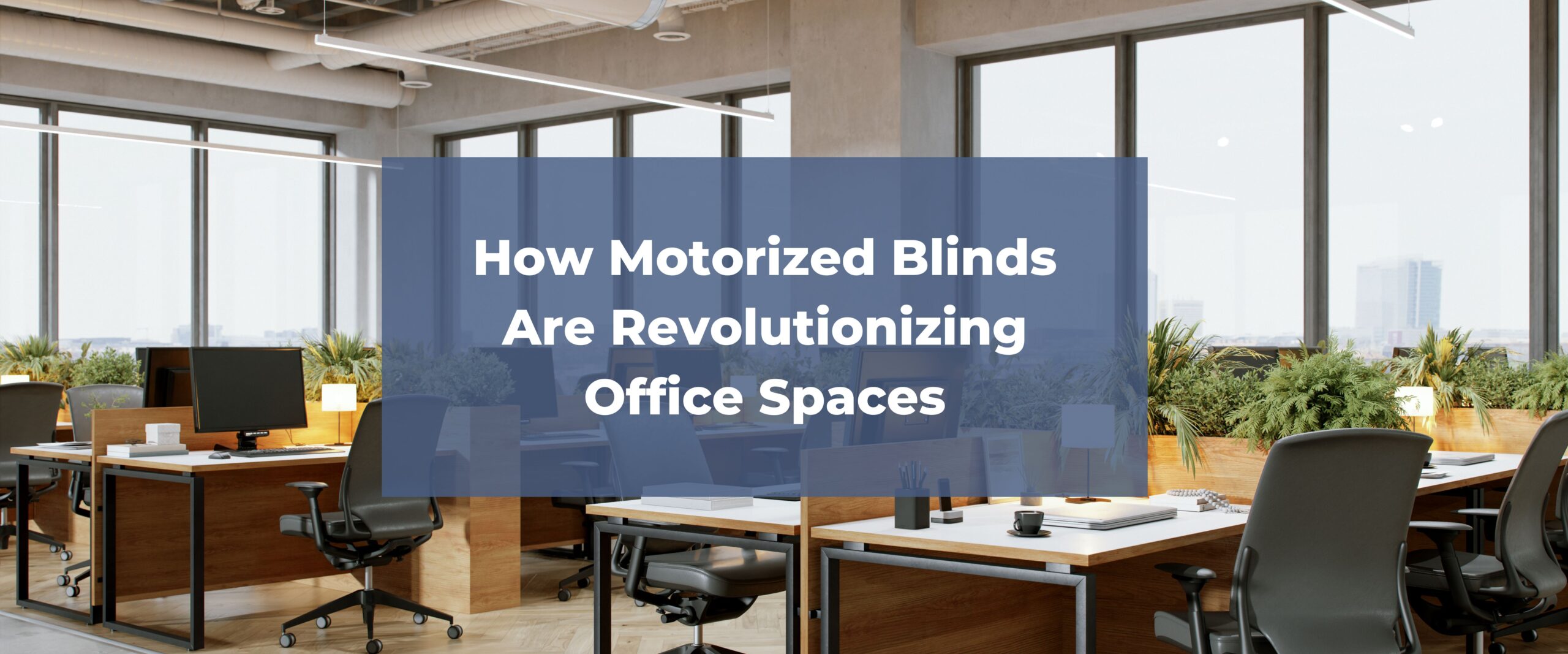
Take 40% off on all window shades - Use the code BLOOM40 at the checkout - Valid through 04/21
-
-
-
- Give Us Call or Text Us
866 206-8056Monday – Friday
8:00 AM – 11:00 PM ESTSaturday & Sunday
10:00 AM – 7:00 PM EST
-
-
-
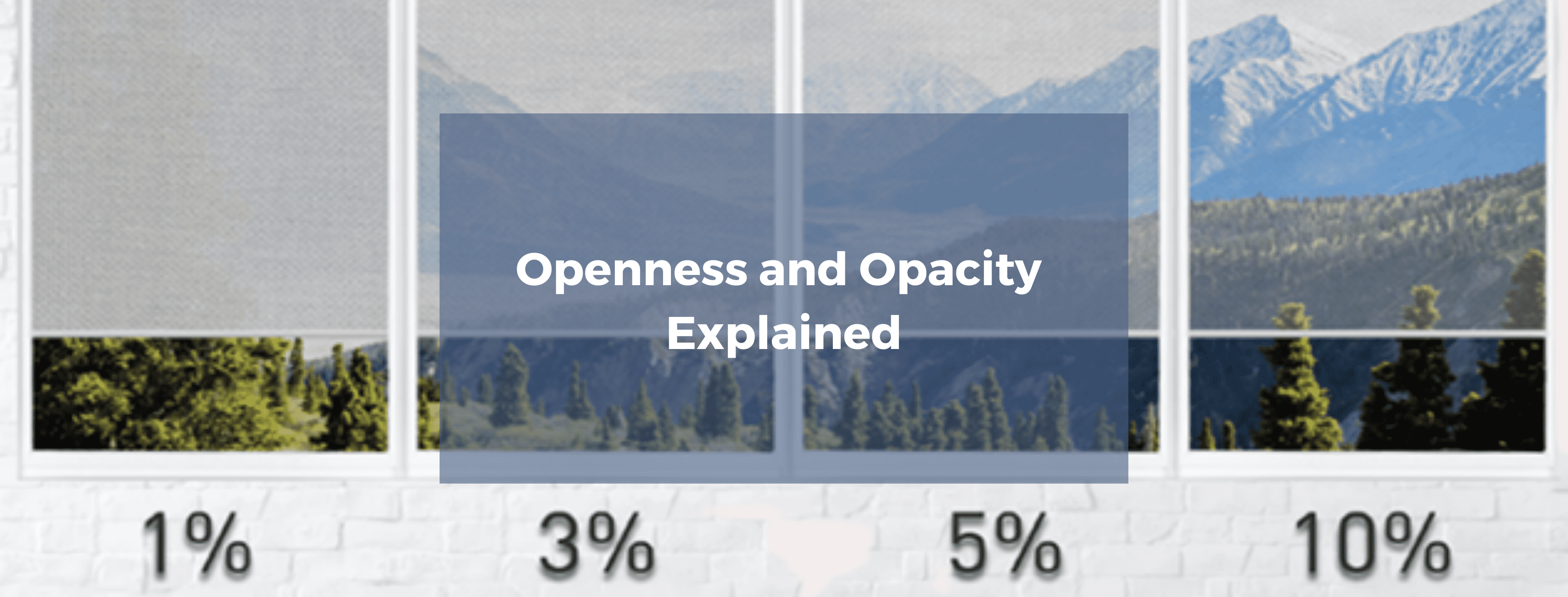
As we invite sunlight into our spaces through solar shades, the terms “openness” and “opacity percentage” take center stage. These factors are the keys to finding the right balance between natural light, privacy, and energy efficiency. In this blog post, we’ll demystify openness and opacity percentages, helping you make informed decisions when choosing solar shades for your home or office.
The percentage on window shades typically refers to either the openness or the opacity percentage of the fabric used in the shade. Openness percentage indicates the degree of openness or density of the fabric weave, affecting the amount of light that can penetrate the shade and the level of visibility through it. On the other hand, opacity percentage indicates the degree to which a material allows light to pass through it, influencing factors such as privacy, light filtering, and energy efficiency. Depending on the specific percentage provided, it helps consumers understand how much light is allowed to enter the room and how much privacy or visibility is maintained.
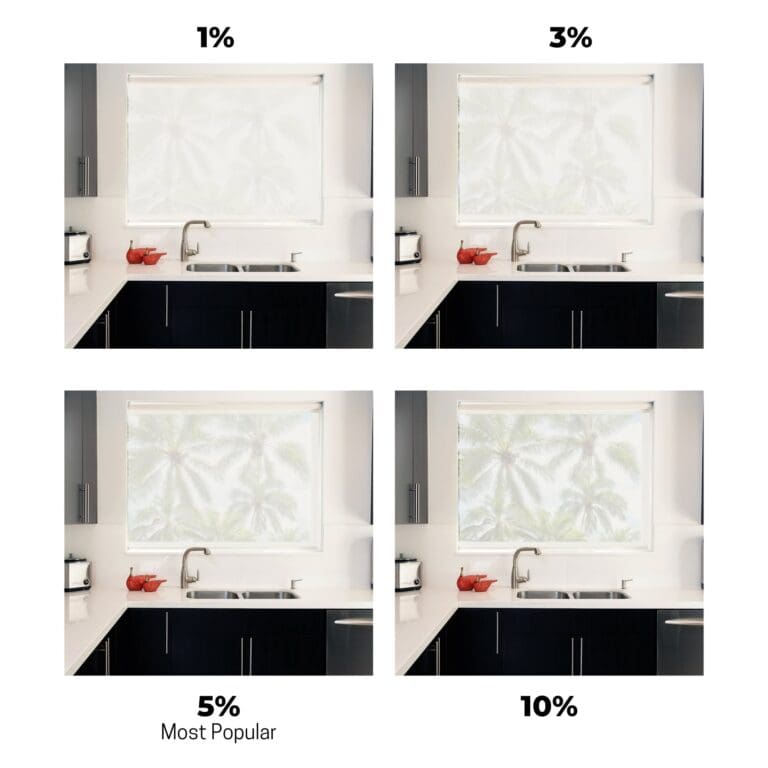
Most homeowners choose a 5% openness for their solar screen shades.
This is the ideal percentage to enjoy views without any unnecessary glare, while protecting furniture from harmful UV rays. Anything below 5% openness is recommended for maximum shading, privacy, and energy savings
NOTE: solar shades DO NOT provide privacy at night. You will need an additional window treatment if privacy is one of your main concerns. In order to maintain privacy at night, you need a certain level of opacity.
Opacity percentage on window shades serves as the inverse of openness percentage, providing a complementary perspective on the fabric’s characteristics. While openness percentage defines the degree of openness or density of the fabric weave, impacting visibility and light penetration, opacity percentage emphasizes the fabric’s ability to block light and maintain privacy. In other words, a higher opacity percentage corresponds to a lower openness percentage, indicating a denser fabric weave that effectively blocks more light and reduces visibility through the shade. This relationship between opacity and openness allows consumers to understand how the fabric’s properties influence factors such as privacy, light control, and energy efficiency when choosing window shades for their spaces.
When it comes to selecting the perfect solar shades for your space, finding the right balance between openness and opacity percentage is essential. Here’s a guide to help you make an informed decision based on your specific needs and preferences:.
Consider Desired Levels of Privacy: If privacy is a top priority, opt for shades with higher opacity percentages. These shades effectively block light and reduce visibility, making them ideal for bedrooms, bathrooms, or any area where privacy is essential. Alternatively, if maintaining a view of the outside world is important, choose shades with a lower opacity percentage, allowing more light to filter through while still providing some level of privacy.
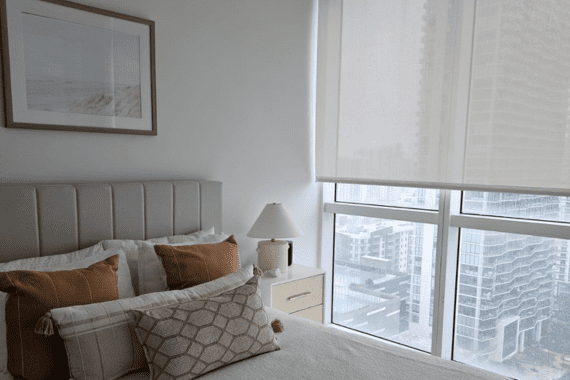
Evaluate Light Control Needs: Assess how much natural light you want to let into your space and how important it is to control glare and UV exposure. For rooms where you desire maximum light control, such as home theaters or offices with computer screens, consider shades with higher opacity percentages. These shades effectively block out glare and UV rays, creating a comfortable environment for work or relaxation. On the other hand, if you prefer a softer, diffused light that still allows for a view of the outdoors, shades with lower opacity percentages may be more suitable.
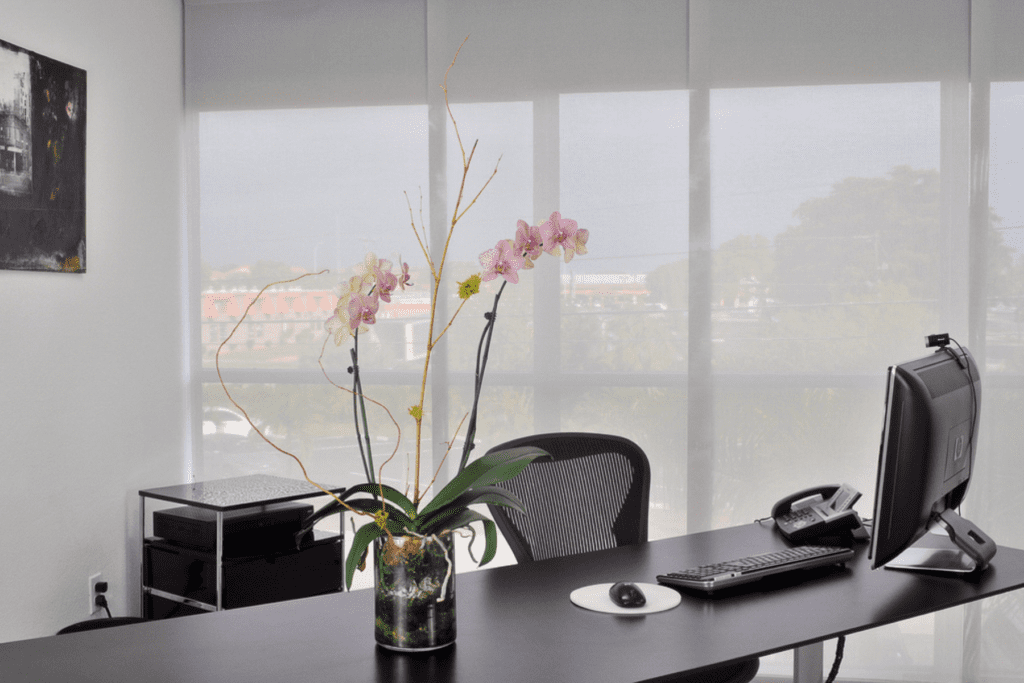
Prioritize Energy Efficiency: Energy efficiency is another crucial factor to consider when choosing solar shades. Shades with higher opacity percentages not only provide better light control and privacy but also contribute to improved energy efficiency by reducing solar heat gain. This means less reliance on air conditioning during hot summer months, leading to lower energy bills and a more environmentally-friendly home or office.
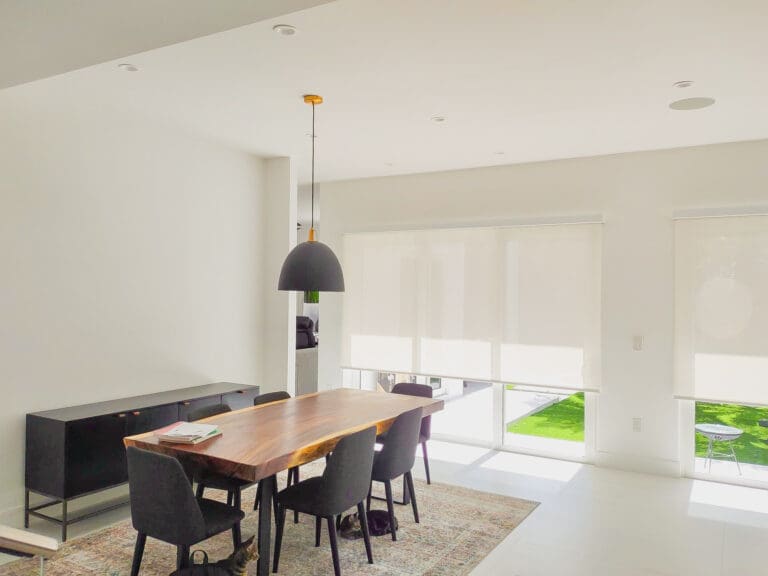
By carefully considering these factors and finding the right balance between openness and opacity percentage, you can select solar shades that not only meet your practical needs for privacy, light control, and energy efficiency but also enhance the overall aesthetic and functionality of your space..
Openness and opacity percentage play crucial roles in determining the effectiveness and functionality of solar shades in any space.
By understanding these percentages and considering factors such as desired levels of privacy, light control, and energy efficiency, you can make informed decisions when selecting the perfect solar shades for your home or office. Remember, the right balance between openness and opacity percentage can enhance both the aesthetic appeal and practical functionality of your space, ensuring optimal comfort and satisfaction.
With customizable options like ShadeMonster’s solar shades, you have the flexibility to tailor your window treatments to meet your specific needs and preferences. So, whether you prioritize a clear view of the outdoors or maximum privacy and light control, there’s a perfect solution waiting for you. Explore the world of solar shades, embrace the power of openness and opacity percentages, and transform your space into a haven of comfort and style.